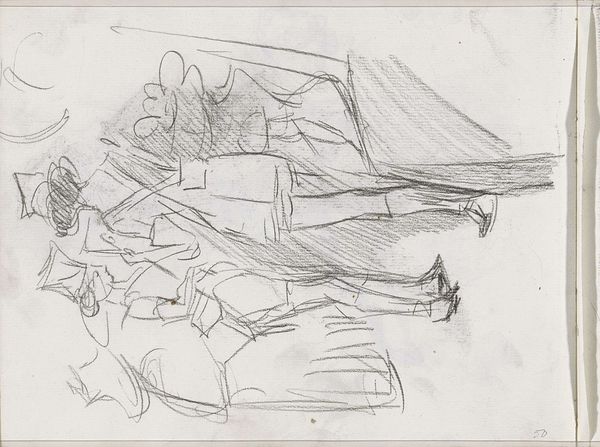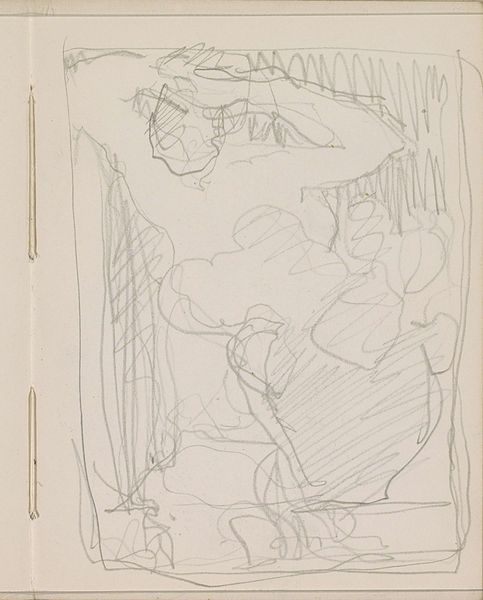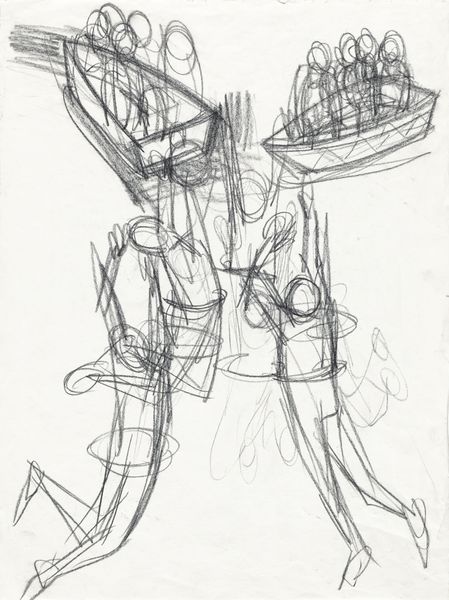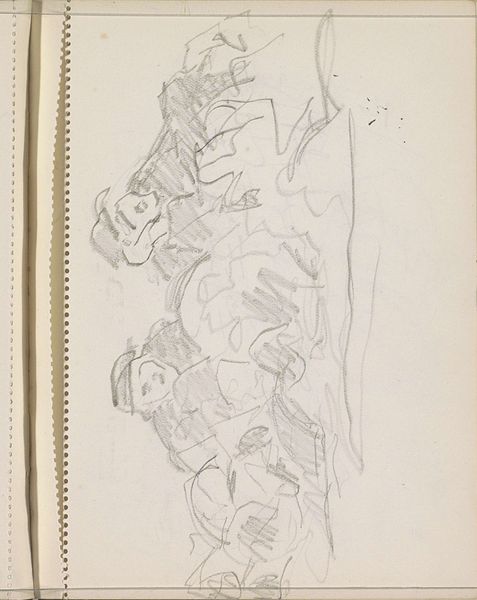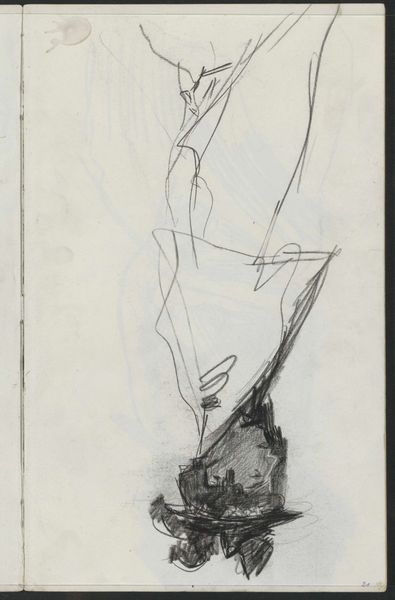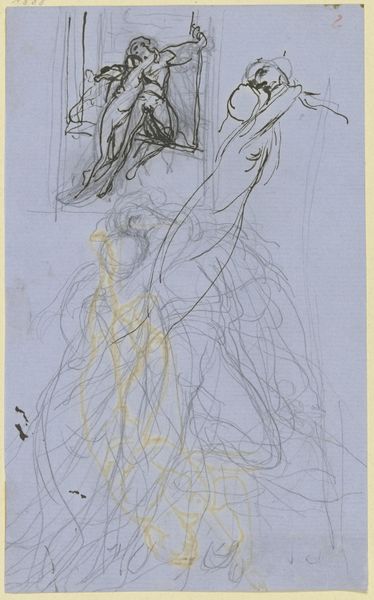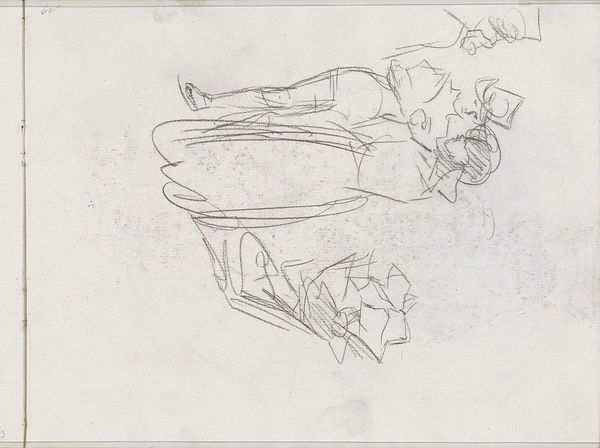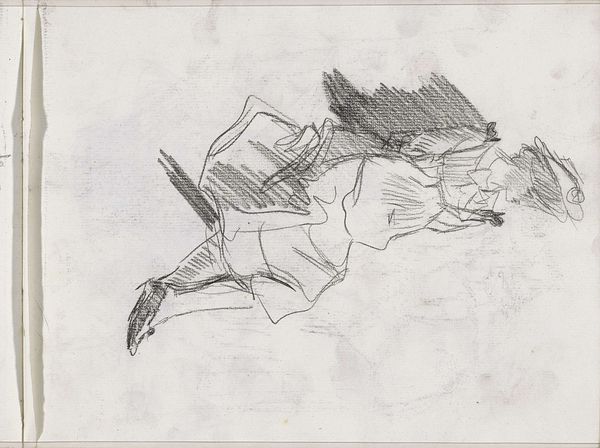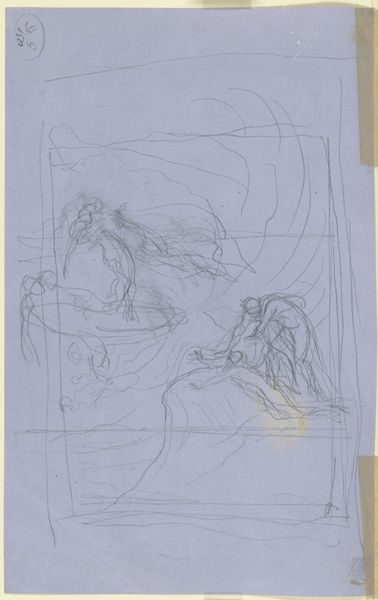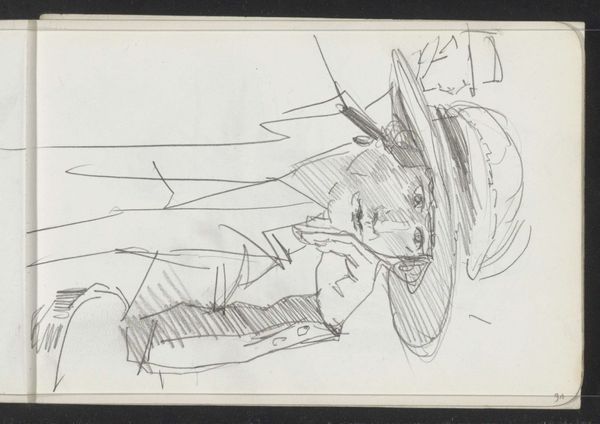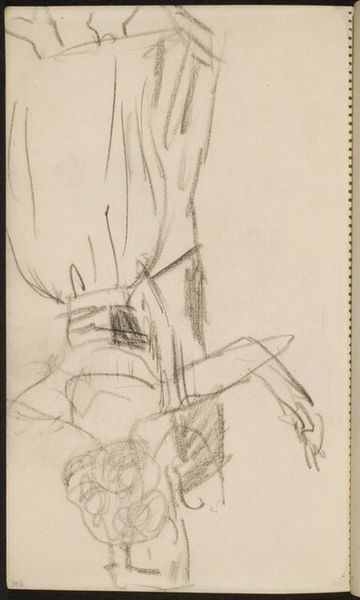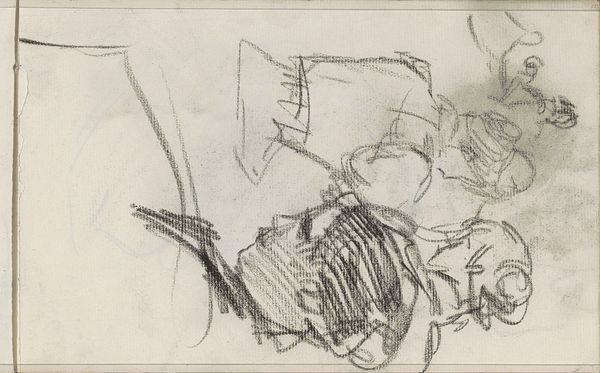
drawing, graphite
#
portrait
#
drawing
#
contemporary
#
figuration
#
graphite
Dimensions: overall: 25.3 x 21 cm (9 15/16 x 8 1/4 in.)
Copyright: National Gallery of Art: CC0 1.0
Editor: Here we have Frank Auerbach's 1994 graphite drawing, "Ruth Bromberg Seated I". It's a very energetic, almost frenetic sketch, capturing a seated figure. What do you see in this piece, considering Auerbach’s overall practice? Curator: I see a struggle, and within it, a profound engagement with the sitter and the act of representation itself. Auerbach, deeply influenced by post-war existentialism, often portrays figures marked by a sense of displacement and resilience. This isn't simply a portrait; it's an exploration of identity. Look at the density of the graphite lines. Where do they seem most concentrated? Editor: Definitely around the face and the shoulders. There's a real weight to it. Curator: Precisely. This layering and reworking, characteristic of Auerbach's process, can be interpreted as a visual metaphor for the complex and often contradictory layers of the self, particularly within the context of post-war Europe. How does the sitter’s pose, the act of being “seated”, factor into your interpretation? Editor: The fact that she is seated could emphasize the burdens placed upon her, or her place as a women during that time in history. It might reflect themes of confinement or a desire for a defined position in the world? Curator: Yes, precisely! Auerbach often challenged conventional notions of portraiture, and he used expressionistic techniques to engage ideas concerning cultural context. It compels us to look beyond the surface. Editor: This really adds layers of meaning I wouldn't have picked up on initially. Now it feels less like a simple drawing and more like an investigation of the human condition. Curator: Exactly, seeing art within different critical perspectives unlocks many layers, it makes for enriching conversation and deeper engagements with our own selves!
Comments
No comments
Be the first to comment and join the conversation on the ultimate creative platform.
